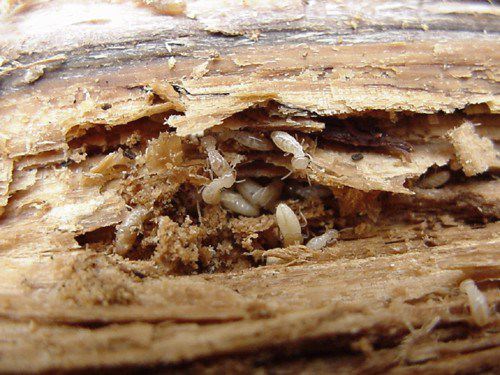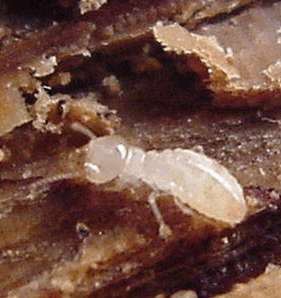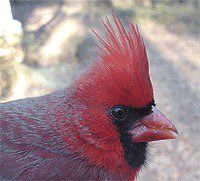|
|
|||
|
THIS WEEK at HILTON POND |
 Almost nothing strikes more fear into a homeowner than the sudden discovery that termites are in the woodwork. Fortunately, at Hilton Pond Center an exterminator treats annually against these wood-eating insects, so aside from slight damage that occurred long ago, there's no sign of termites in the old farmhouse that contains our office. Nonetheless, while splitting firewood on the last day of January, we were surprised to find a small colony of termites in the damp center of a hardwood log. The insects were fairly active--at 67 degrees the day was the warmest since last fall--so it was a real challenge trying to get digital photos as the termites scrambled to avoid sudden exposure to dry air and light. Termites are indeed creatures of darkness, and of high humidity. Removed from their hidden galleries, they quickly desiccate. Thus, long-term survival was quite unlikely for any of those we disturbed. Termites are thought to be related to cockroaches. Although superficially ant-like in appearance and colonial in habit, termites are in their own order--the Isoptera--so named because each of the four wings is nearly identical in size and appearance. (By comparison, the fore- and hind-wings of ants--and of their relatives the bees and wasps--have different shapes.)
Curiously, termites eat lots of cellulose, but they can't digest any of it. That task falls to microorganisms that live in the termite's gut--yet another example of mutualistic symbiosis in the animal world that abounds at Hilton Pond Center. If you enjoy "This Week at Hilton Pond," please help Support Hilton Pond Center for Piedmont Natural History |

 Termite castes are quite complex. A mature colony will have main reproductives (the queen--who may lay thousands of eggs over several years--and her king); supplementary reproductives (they, pictured at left, have short wings and may reproduce, supplementing the queen's egg-laying output); soldiers (sterile adults with huge heads and mandibles used to ward off invaders); and workers (nymphs and sterile adults, below right, which feed the queen and carry out most of the business of the colony, such as nest- and tunnel-building). At specific times of the year a colony gives rise to hundreds of winged kings and queens that swarm skyward and pair off to start new colonies.
Termite castes are quite complex. A mature colony will have main reproductives (the queen--who may lay thousands of eggs over several years--and her king); supplementary reproductives (they, pictured at left, have short wings and may reproduce, supplementing the queen's egg-laying output); soldiers (sterile adults with huge heads and mandibles used to ward off invaders); and workers (nymphs and sterile adults, below right, which feed the queen and carry out most of the business of the colony, such as nest- and tunnel-building). At specific times of the year a colony gives rise to hundreds of winged kings and queens that swarm skyward and pair off to start new colonies. Although termites in Africa and elsewhere build huge above-ground mounds, species in the U.S. live either below ground or in wood. Some dry-wood termites occur in the Southwest in old fence posts, wooden buildings, or standing dead trees; they don't need soil contact and get water from their own metabolic processes. The most common and destructive termite in the Eastern U.S. is Reticulitermes flavipes, pictured here, a subterranean species that lives in wood that is in contact with or close to the soil. Hidden beneath the houses of humans, resourceful worker termites often build mud tunnels connecting the moist underground termite nest with wooden floor joists that, in turn, provide cellulose--the termites' primary food.
Although termites in Africa and elsewhere build huge above-ground mounds, species in the U.S. live either below ground or in wood. Some dry-wood termites occur in the Southwest in old fence posts, wooden buildings, or standing dead trees; they don't need soil contact and get water from their own metabolic processes. The most common and destructive termite in the Eastern U.S. is Reticulitermes flavipes, pictured here, a subterranean species that lives in wood that is in contact with or close to the soil. Hidden beneath the houses of humans, resourceful worker termites often build mud tunnels connecting the moist underground termite nest with wooden floor joists that, in turn, provide cellulose--the termites' primary food.

